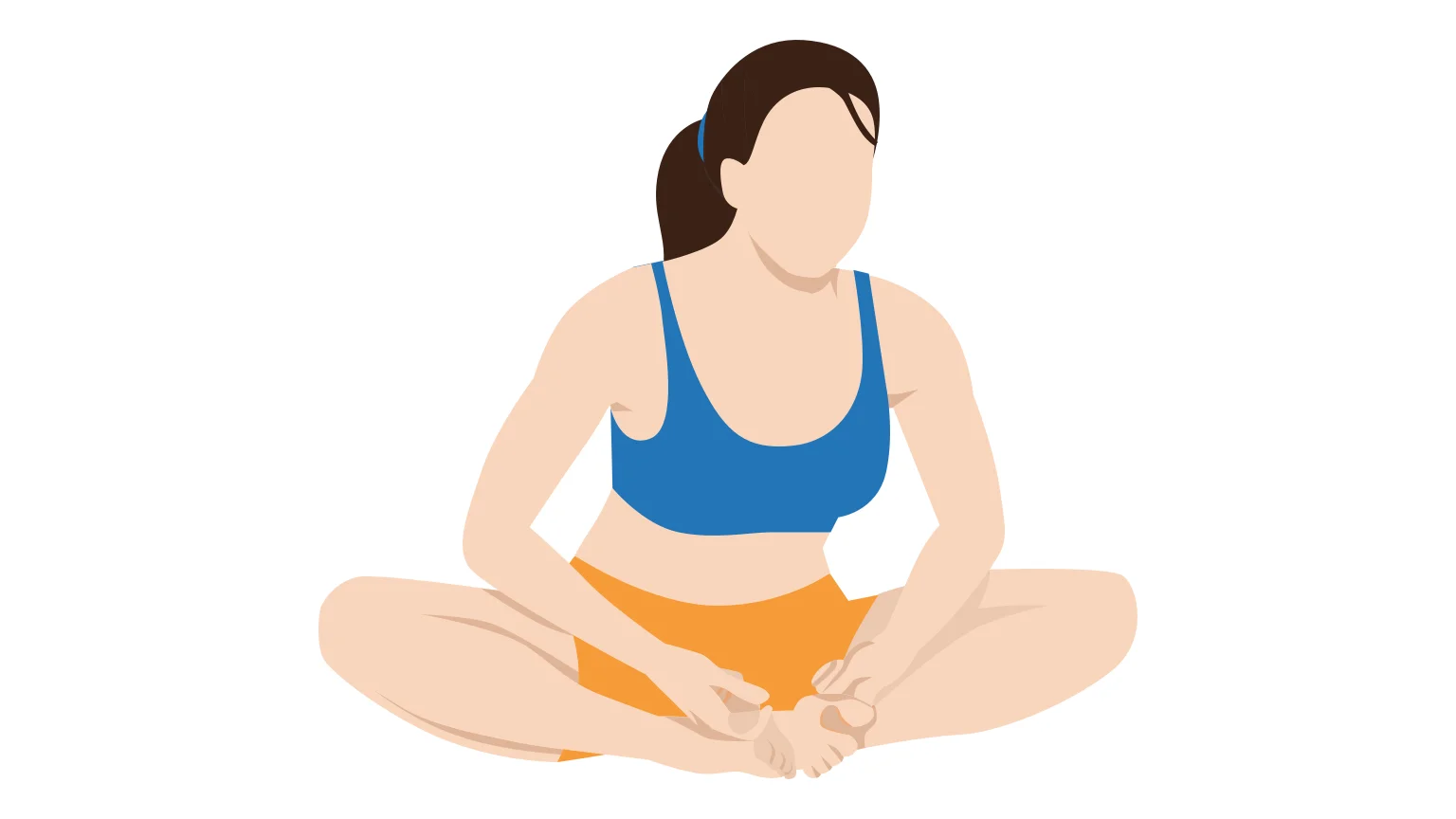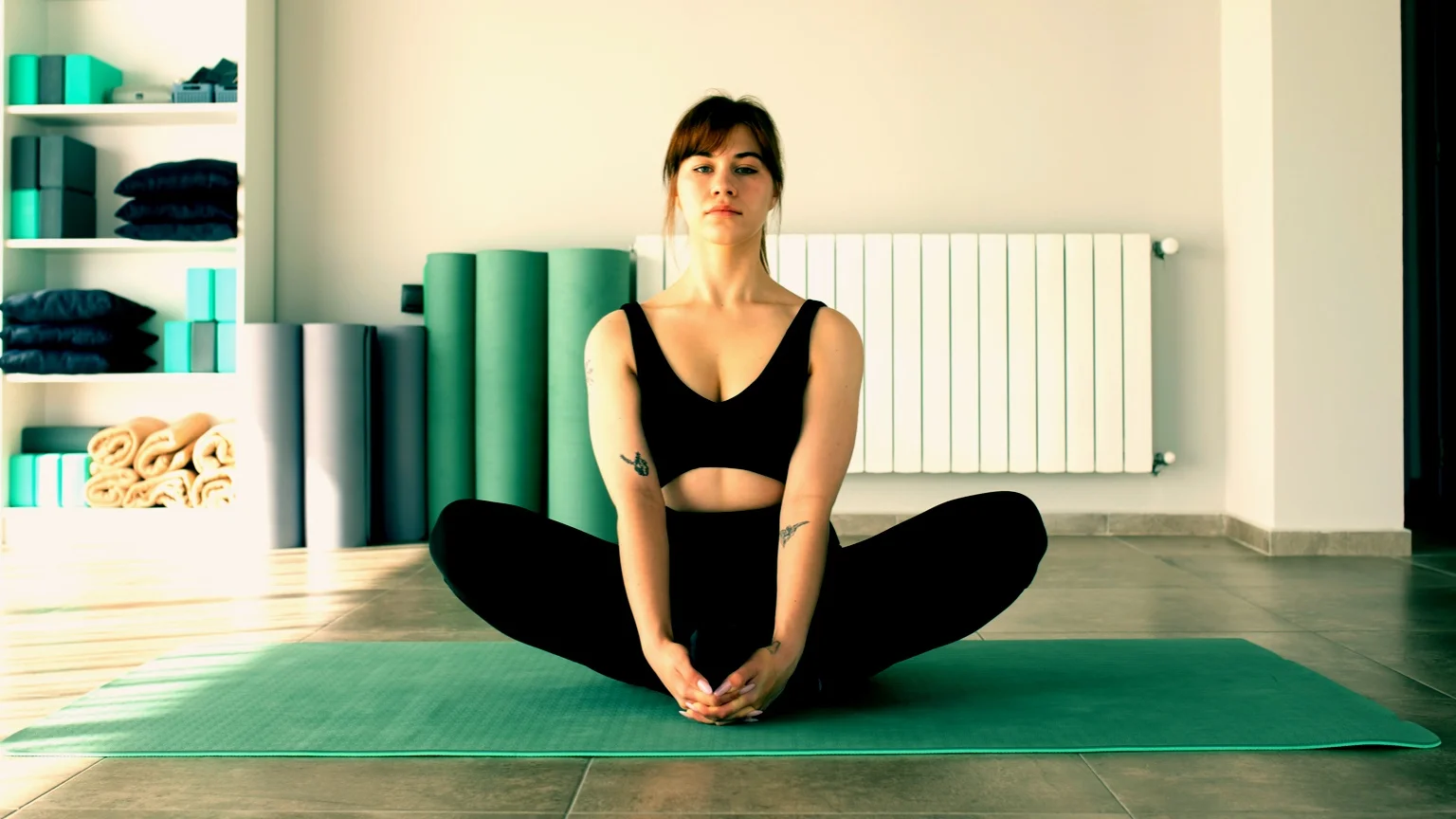Bound Angle Pose (Baddha Konasana, Cobbler’s Pose)

The Bound Angle Pose, also known as Baddha Konasana, Cobbler’s Pose or Butterfly Pose, is a seated yoga pose. In this pose, you start in a seated position with your legs extended out in front of you. You then fold your legs so the soles of your feet come together, as close as possible to your pelvis. Holding your feet with your hands creates a shape that resembles the wings of a butterfly.
- Position: Seated.
- Stretched body parts: The Bound Angle Pose stretches your inner thighs, groin and knees. It can also provide a gentle stretch to your lower back and hips.
- Benefits: The Bound Angle Pose is a simple hip opening stretch, so it can help improve your flexibility. By opening up your hips and stretching your thighs and quads, it can improve the circulation in your lower body. It can also help improve digestion by gently stimulating the abdominal organs.
- Similar poses: Easy Pose (Sukhasana), Hero Pose (Virasana), Lotus Pose (Padmasana)
Meaning of Baddha Konasana
The name “Baddha Konasana” is derived from three Sanskrit words:
- “Baddha” means “bound” or “tied”;
- “Kona” means “angle”; and
- “Asana” means “pose”.
Put together, we get the name “Baddha Konasana” which translates literally to “Bound Angle Pose”. The name reflects the shape your body takes when performing the pose. Your body forms an angular shape with your feet bound together.
This pose is also commonly known as the Cobber’s Pose. It is thought that the pose resembles the seated position of a cobbler (a person who repairs shoes) at work.
How to do The Bound Angle Pose

- Start by sitting on your yoga mat with your legs extended straight out in front of you.
- Bent your knees and bring together the soles of your feet. Let your knees bend out to your sides.
- Pull your feet as close to your body as possible.
- Keeping your spine straight, hold onto both feet or ankles with your hands.
- Using your elbows if necessary, press your knees down to the floor.
- Stay in the pose for a few minutes, taking deep breaths.
Variations
- Easier pose: If you find it difficult to bring your heels close to your pelvis, you can keep them further away. Similarly, you might find it difficult to push your knees down to the ground. Just bring your body into the pose as close as is comfortable. As you repeat this pose, as well as other yoga poses, you will find it easier to take the proper position in time.
- Forward bend: Once you are in the Bound Angle Pose, try leaning your torso forwards to the floor. This will deepen the stretch in your hips and lower back, making the pose more challenging.
- Revolved Bound Angle Pose: This variation of the Bound Angle Pose sees you twist your torso to one side and reach your opposite arm across your body to the other knee.
Tips
- Keep your spine straight while holding the pose. Do not allow your back to round out.
- Use your breath to settle into the pose. Lengthen your spine as you inhale and, as you exhale, bring your knees closer to the floor.
- Don’t force your knees down to touch the floor. If you find it difficult to move your knees down, only move them as far as is comfortable. Forcing down your knees increases the risk of injury or strain.
- If needed, sit on a folded blanket if it helps you maintain a straight spine, or is more comfortable.
Prep poses
- Easy Pose (Sukhasana) – In the Easy Pose, you sit with your legs crossed. This pose helps stretch your knees and ankles, and opens up your hip, in a similar way to the Bound Angle Pose. It’s a good pose to build foundational posture. Stretching your hips and lower body will prepare your body for more challenging yoga poses.
- Child’s Pose (Balasana) – Child’s Pose gently stretches and opens up your hips and thighs, preparing your body for more complex poses like the Bound Angle Pose. The Child’s Pose can also help calm your body and prepare your mind to enhance your focus and concentration.
- Hero Pose (Virasana) – The Hero Pose helps to open up your lower body, particularly your knees and ankles. It also encourages proper alignment of your spine and hips, making it beneficial as a prep pose for the Bound Angle Pose.
